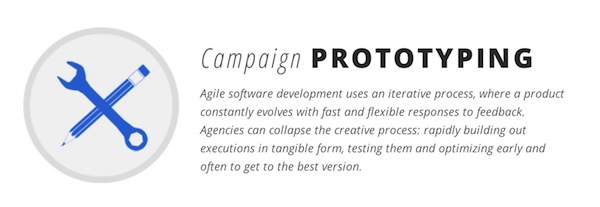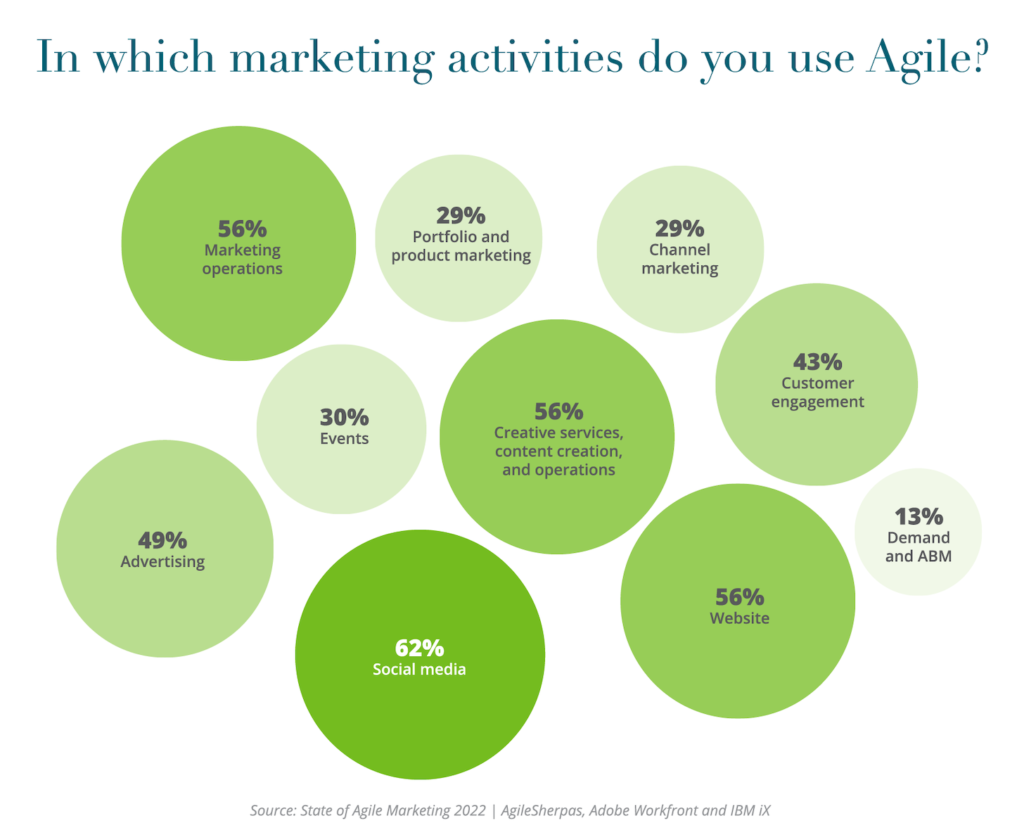Hackathons. Prototyping. Beta testing.
Sounds like a typical day in Silicon Valley software, right? Not this time. This is the language of Madison Avenue in the 21st century. Or at least it will be, if Google’s new Agile Creativity initiative takes root.
In collaboration with a number of agency visionaries, Google has produced a compelling half-manifesto/half-tipsheet with recommendations for how agencies can reinvent themselves as “agile” businesses.
It merges the DNA of Silicon Valley and Madison Avenue into some fascinating hybrid concepts. Instead of a “minimal viable product”, there’s a “minimum viable brief.” Instead of “hackathons,” there are “idea-thons.” Beta testing becomes a way of implementing pilot projects with clients to pioneer new processes. Prototyping is now done in the context of campaigns — quickly launch new creatives into the market in a more experimental and iterative fashion.
At the heart of agile creativity, they place a strong emphasis on individual interactions and suggest ways that agencies can harness what they call “Collaboration 2.0.” Physically (or virtually) co-locate team members for the duration of a project, in agile pods or “war rooms” that would seem at home on the set of The Social Network. Add technologists to the creative team (I couldn’t agree more). Develop “T-shaped” talent — highly skilled in one area, while interested in and ready to collaborate on many other areas.
From a slight different angle, Google is championing agile marketing.
It’s an inspiring read, interspersed with many great video interviews of agency thought leaders pursuing this concept. Here’s the introductory video:
…which kicks off with great quotes such as:
MIles Nadal, Founder, Chairman and CEO, MDC Partners:
You need to be constantly reinventing. You need to challenge things. You need to try different ideas, different technologies, different creative approaches. Because the world is changing.
Greg Andersen, CEO, BBH New York:
We are entering an age where agile creativity is going to be a competitive advantage.
Matt Howell, Global Chief Digital Officer, Arnold:
That means learning from process models that relate to what advertising is becoming, which is an industry that is much more about technology.
Winston Binch, Partner and Chief Digital Officer, Deutsch LA:
We want to get our culture, our agencies, and everyone thinking more like agile developers. … The greatest successes for me have always come about from having small, small teams being free to move forward quickly.
Rei Inamoto, Chief Creative Officer, AKQA:
Instead of art and copy, it’s art and code. When you combine these two mindsets that’s when you get an idea that’s relevant in the 21st century.
Click to view their site — great stuff.




Yes! Focus on product over documentation. Great primer video.
Hi Scott,
I have your other post trying to see how Google is championing Agile marketing, but I only found one reference to Google in that post, and how they are running experiments on the subject.
Agile marketing, as far as I know (and I’m a project manager who fully understands Agile), is understood differently by different people. Also, I don’t recall seeing a post from anyone from Google on the subject. Could you link to one if you can find one?
Thanks for this great lead in to the world of Agile. I find it interesting that there has been resistance for so long from a lot of the industry leaders in creative agencies. I’ve had the privilege to learn Agile from some of the smartest minds in the industry, working with some of the biggest brands in the world, and it never fails… non-developers resist the change like crazy, and claim it doesn’t work for them – especially in advertising.
Meanwhile, developers and project managers will claim they are ‘Agile’, and continue to practice the same bad habits that destroy their productivity.
It’s great to see a public, international shift toward optimized processes for workflow. I hope this also helps to squash the misconception of Agile as a rigid, formal process with lots of terms to learn and tools to use. Instead, it must be thought of as a mindset, or strategic approach to solving the big, recurring problems on any creative team.
I’ve written a book called ‘Agile for Agencies: Practical Solutions to Common Problems in Creative Agencies’. I’m giving it away for free, so I hope you’ll check it out and tell me what you think.
http://unbouncepages.com/agile-for-agencies
Best!
– Meshach